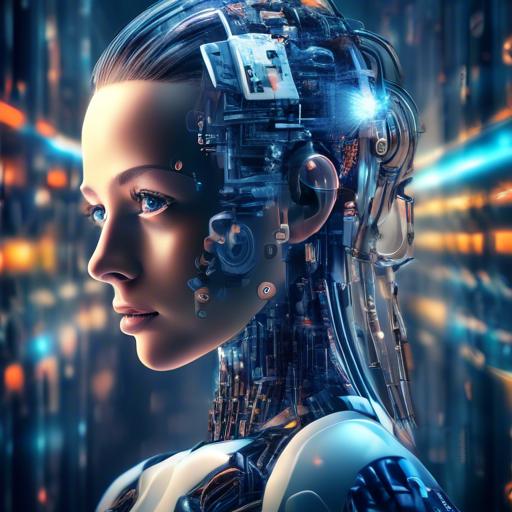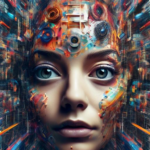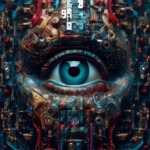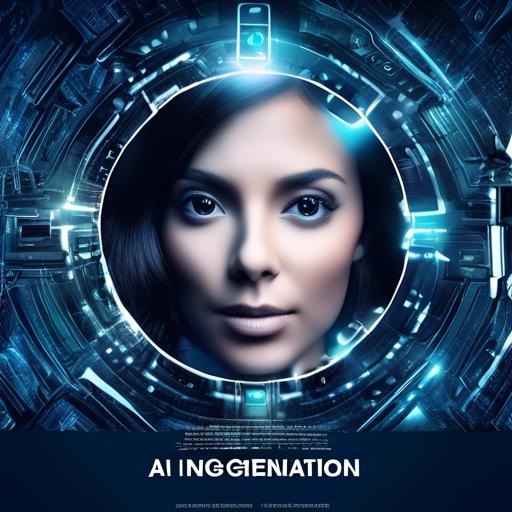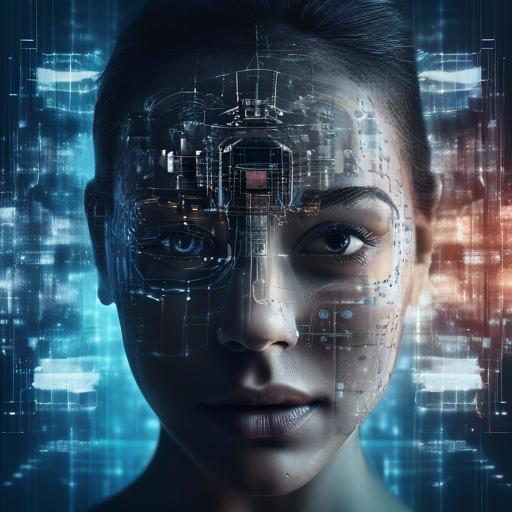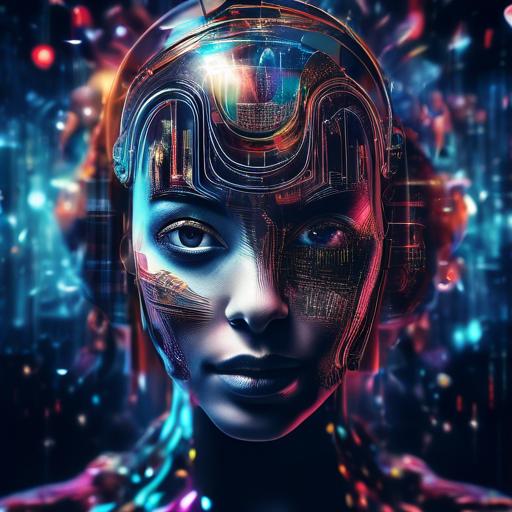In the rapidly evolving world of artificial intelligence, the realm of image creation stands as a dazzling frontier where art meets algorithm, merging human creativity with the power of machine learning. Whether you’re an aspiring digital artist, a seasoned graphic designer, or simply a curious mind eager to explore this fascinating intersection, understanding the key terms in AI image creation can unlock a realm of infinite possibilities. Our journey begins here, as we delve into the essential vocabulary that will not only demystify the technological wizardry behind AI-generated visuals but also empower you to harness these innovations with confidence and flair. So grab your virtual paintbrush and let’s embark on this enlightening adventure together, one key term at a time!
Table of Contents
- Understanding Pixels: The Building Blocks of Digital Imagery
- Exploring Algorithms: The Magic Behind the Machine
- Diving into Deep Learning: How Neural Networks Create Art
- Demystifying GANs: Generative Adversarial Networks Explained
- From Data Sets to Masterpieces: The Role of Training Data
- The Power of Resolution: Why Image Quality Matters
- AI Ethics in Image Creation: Balancing Innovation and Responsibility
- Final Thoughts
Understanding Pixels: The Building Blocks of Digital Imagery
Each digital image you see on your screen is composed of a multitude of tiny squares called **pixels**. These are the most fundamental units of a digital image, acting like the dots in a pointillist painting. When you zoom into an image, it’s these pixels you see as individual colored squares.
Here’s what you need to know about pixels in the context of AI-assisted image creation:
- Resolution: This term refers to the number of pixels in an image. A higher resolution generally means more pixels and thus more detail.
- Color Depth: This is the number of bits used to represent the color of each pixel. Higher color depth allows for more precise color representation.
| Term | Description |
|---|---|
| Pixel Density | Measured in PPI (Pixels Per Inch), it indicates how many pixels are displayed per inch of the screen. |
| Subpixels | Each pixel is often divided into smaller subunits called subpixels, each displaying a different color (Red, Green, Blue). |
Pixels are both the strength and the limitation of digital images. Understanding their role helps you navigate the complexities of **AI image creation** more effectively. Whether you’re adjusting the resolution for print quality or manipulating color depth for more vibrant images, the control you exert over these tiny building blocks can significantly impact the final output.
Moreover, in AI-driven design, tweaks at the pixel level allow for more nuanced and creative results. Mastering the basics of pixels and their properties opens up a broad spectrum of possibilities, enabling you to leverage AI tools more proficiently to create stunning visual art.
Exploring Algorithms: The Magic Behind the Machine
Delving into the realm of artificial intelligence and its ability to create stunning images can feel like opening a door to a world of enchantment. This process is driven by a myriad of sophisticated algorithms that work in concert to produce what can seem like digital sorcery. To truly appreciate these wonders, it is essential to understand the key terms that are frequently mentioned in AI image creation.
Neural Networks: At the core of AI image creation lies neural networks, which are computational models inspired by the human brain. They are composed of layers of nodes, or ”neurons,” each capable of processing input data and passing it to the next layer. Common architectures include:
- Convolutional Neural Networks (CNNs): Ideal for image recognition and processing, thanks to their ability to capture spatial hierarchies.
- Generative Adversarial Networks (GANs): These pit two neural networks against each other—a generator that creates images and a discriminator that evaluates them.
Transfer Learning: This technique leverages pre-trained models on vast datasets, allowing users to fine-tune these models for specific tasks without starting from scratch. This method can save an enormous amount of computational time and resources.
| Term | Description |
|---|---|
| Backpropagation | A method used to adjust the weights in a neural network by calculating the gradient of the loss function. |
| Epoch | One complete pass through the entire training dataset. |
Latent Space: Think of this as the hidden dimension where the magic truly happens. It is here that the system interprets data through vectors, positioning it in a way that facilitates the generative process. Understanding latent space is crucial for grasping how AI models create new, unique images.
By familiarizing yourself with these terms, you can decode the complex yet fascinating language of AI image creation and appreciate the ingenuity that drives this innovative technology.
Diving into Deep Learning: How Neural Networks Create Art
When it comes to understanding how neural networks conjure up mesmerizing digital art, there’s a knack to grasping a few key terms that serve as guideposts in this creative venture. Let’s demystify some of these concepts, which are fundamental to AI image creation.
**Algorithm:** Think of the algorithm as the recipe that tells the neural network how to combine various ingredients — pixels, colors, and patterns — to cook up a digital masterpiece. Different algorithms can yield vastly different styles of artwork, much like how recipes determine the flavor and presentation of a dish.
**Neural Network:** Imagine a neural network as a huge orchestra of mathematical functions, all playing together to transform input data into meaningful outputs. Each ‘musician’ in this metaphorical orchestra contributes to identifying patterns and features within the data, ultimately blending strokes, curves, and shades into a cohesive image that seems almost magical.
- Layers: The building blocks of a neural network, layers can be thought of as individual stations in an assembly line where pieces of data are successively transformed.
- Nodes (or Neurons): These are akin to artisans at workbenches, each one making tiny, meticulous adjustments to the data as it passes through each layer.
- Weights: Like the tools of a craftsman, weights determine how much influence each node has on the final outcome, fine-tuning the process of creation.
- Backpropagation: This is the quality control phase, where the network learns from its mistakes and makes necessary adjustments to improve the artwork.
**Style Transfer:** Ever dreamed of creating your own Starry Night or Mona Lisa? Style transfer is your gateway to reimagining classic masterpieces in your unique vision. It’s a technique where the neural network separates “style” from “content” and then re-applies the style of one image (e.g., brush strokes of van Gogh) to the content of another (e.g., a modern photograph).
| Term | Definition | Example |
|---|---|---|
| Epoch | One complete cycle through the training dataset | 20 epochs to refine an image |
| GAN | Generative Adversarial Network; a framework where two neural networks compete to improve outputs | Creating hyper-realistic digital art |
| Pixel | Smallest unit of a digital image | Thousands of pixels create intricate details |
Delving into these terms not only enriches your understanding but also enables you to better appreciate the technological artistry behind AI-generated images. Whether you’re an enthusiast or a budding digital artist, recognizing these concepts can be your first step towards mastering the enchanting world of AI art creation.
Demystifying GANs: Generative Adversarial Networks Explained
Generative Adversarial Networks, or GANs, have revolutionized the way we approach image creation in artificial intelligence. These powerful networks consist of two main components: the **generator** and the **discriminator**. The generator’s role is to create new data samples, while the discriminator evaluates them for authenticity. This tug-of-war game pushes both components to improve continuously, leading to highly realistic images over time.
In the context of GANs, there are several key concepts to grasp:
- Latent Space: This is where the generator starts its creative process. It’s a high-dimensional space that the generator explores to synthesize new images.
- Epoch: A single cycle through the entire training dataset. Neural networks often require many epochs to produce high-quality results.
- Noise Vector: Random data fed into the generator, serving as the initial seed to produce varied outputs.
The **training process** of GANs is intricate and requires careful balancing. If the generator gets too good, the discriminator has no chance to learn, and vice versa. Striking the right balance is crucial for optimal performance. During training, feedback from the discriminator helps the generator enhance its image creation capabilities.
The output quality of GANs can be measured by various metrics. Some popular ones include:
| Metric | Description |
|---|---|
| FID Score | Measures the distance between generated images and real images in feature space. |
| Inception Score | Assesses both the quality and diversity of the generated images. |
By understanding these foundational terms and concepts, you’ll be better equipped to navigate the landscape of AI image creation. Whether you’re an AI enthusiast, researcher, or practitioner, mastering GAN mechanics will undoubtedly bolster your expertise and broaden your horizons.
From Data Sets to Masterpieces: The Role of Training Data
At the core of every successful AI-generated image lies a treasure trove of training data. This data forms the bedrock upon which these spectacular digital creations are built. Think of it as the raw material that fuels the creative engine of AI, transforming simple algorithms into visual virtuosos.
- Diversity: The richness and variety of the training data directly influence the AI’s ability to generate versatile and dynamic images. Imagine feeding an AI with a plethora of landscapes, portraits, and abstract art; the resulting creations will be more nuanced and innovative.
- Quality over Quantity: While having a vast amount of data is advantageous, the quality of the data is paramount. High-resolution images with clear, distinct features contribute more effectively to the training process than a larger set of lower-quality images.
- Annotation: Labeling and tagging the training data with relevant metadata help the AI understand and interpret the intricate details of each image. Proper annotation ensures that the AI learns to recognize patterns, textures, and unique characteristics accurately.
However, curating a robust training dataset isn’t merely about collecting images. The data needs to be meticulously organized and formatted to facilitate seamless learning. This involves categorizing images, ensuring balanced class distributions, and even augmenting data to introduce variety without overwhelming the model.
| Aspect | Description |
|---|---|
| Diversity | Rich and varied dataset to enhance AI’s creative flexibility. |
| Quality | High-resolution and clear images for better learning. |
| Annotation | Accurate and relevant metadata for precise pattern recognition. |
The journey from raw data to refined art is a careful orchestration of balancing, annotating, and diversifying the dataset. As you refine and expand your training data, you will witness the evolution of the AI’s capabilities, enabling it to produce even more astonishing and sophisticated masterpieces. Nurturing your dataset isn’t just a technical requirement; it’s an essential part of cultivating creativity through the power of artificial intelligence.
The Power of Resolution: Why Image Quality Matters
When delving into the world of AI image creation, one of the most critical factors is resolution. High-resolution images are more than just visually appealing; they are crucial for a myriad of applications ranging from professional photography to scientific research. Let’s explore why resolution holds such a significant place in image quality.
Clarity and Detail: At its core, resolution determines the amount of detail an image can hold. Higher resolutions translate to more pixels, contributing to finer detail and sharper clarity. This becomes especially important in domains such as digital art and medical imaging where each nuance matters. Consider the difference between a standard image and a high-resolution one:
| Standard Image | High-Resolution Image |
|---|---|
| Blurry edges | Crisp, well-defined edges |
| Pixelation on zoom | Maintained sharpness |
The advantage of higher resolution spreads across multiple fields. In fashion and product photography, detailed images are essential for representing fabrics and materials accurately. Similarly, in aerial photography, higher resolution allows for the detection of smaller objects and features on the ground, which could be missed in lower-resolution images.
Artistic Flexibility: With improved image quality, artists and designers benefit immensely. High-resolution images provide the flexibility to crop or enlarge sections without compromising quality. This is especially important for creating marketing materials where both print and digital formats require diverse resolution needs.
- Increased creative freedom: More pixels mean more room for creativity.
- Versatility: Use one high-resolution image for various purposes, from billboards to social media.
Enhanced User Experience: Websites and applications sporting high-resolution images stand out for their professional appearance and user engagement. Consumers are more likely to stay longer and revisit platforms that offer visually high-quality content.
Ultimately, the power of resolution lies in its ability to elevate not just the visual appeal of an image, but also its practical applications. High-quality images foster a sense of professionalism, credibility, and engagement, making them indispensable in AI-driven image creation.
AI Ethics in Image Creation: Balancing Innovation and Responsibility
In the rapidly evolving landscape of AI-driven image creation, grappling with ethical considerations is paramount. As we innovate, it’s crucial to ensure our technological advancements are aligned with societal values and responsibilities. Here are some vital concepts to help navigate this tricky terrain:
- Bias in Training Data: Algorithms are only as good as the data they’re trained on. If the data reflect societal prejudices, AI can perpetuate and even amplify these biases, inadvertently causing harm. A concerted effort is required to curate diverse and representative datasets.
- Transparency: Clear communication about how AI models operate and their decision-making processes is essential. Users need to trust that image generation techniques are both reliable and ethical.
- Accountability: It’s easy to be awed by technology’s capabilities, but we must ask who is responsible when things go wrong. Accountability frameworks are necessary to address the misuse of AI-generated images, from deepfakes to unauthorized reproductions.
| Term | Definition |
|---|---|
| Deepfakes | AI-generated images or videos that mimic real people, often used deceptively. |
| Generative Adversarial Networks (GANs) | A class of AI that generates new data by pitting two networks against each other. |
| Ethical AI | AI systems designed and deployed in ways that are consistent with widely accepted moral principles. |
Balancing innovation with ethical considerations can often feel like walking a tightrope. By understanding and addressing these key terms, we can make meaningful strides in developing AI technologies that are both groundbreaking and responsible. The ultimate goal is to harness the power of AI to create stunning, useful images without compromising our collective integrity and values.
Final Thoughts
Remember, mastering the key terms in AI image creation is just the first step on your journey to unleashing your creativity in the digital realm. As you continue to explore and experiment with these concepts, don’t be afraid to push boundaries and think outside the box. The world of AI image creation is ever-evolving, so keep learning, keep creating, and most importantly, keep dreaming. Your next masterpiece could be just a few key terms away. Go forth, armed with knowledge and inspiration, and conquer the digital canvas. The possibilities are endless.

